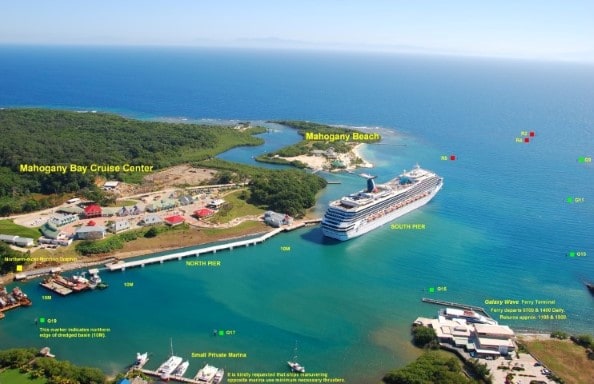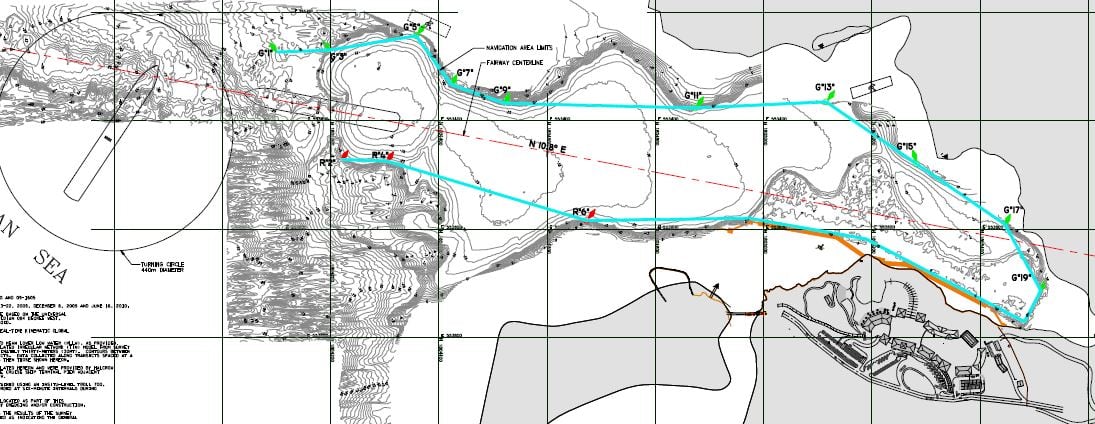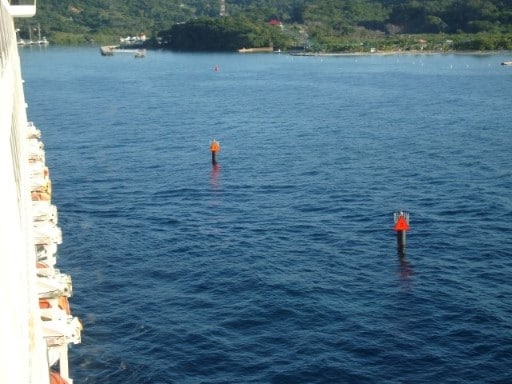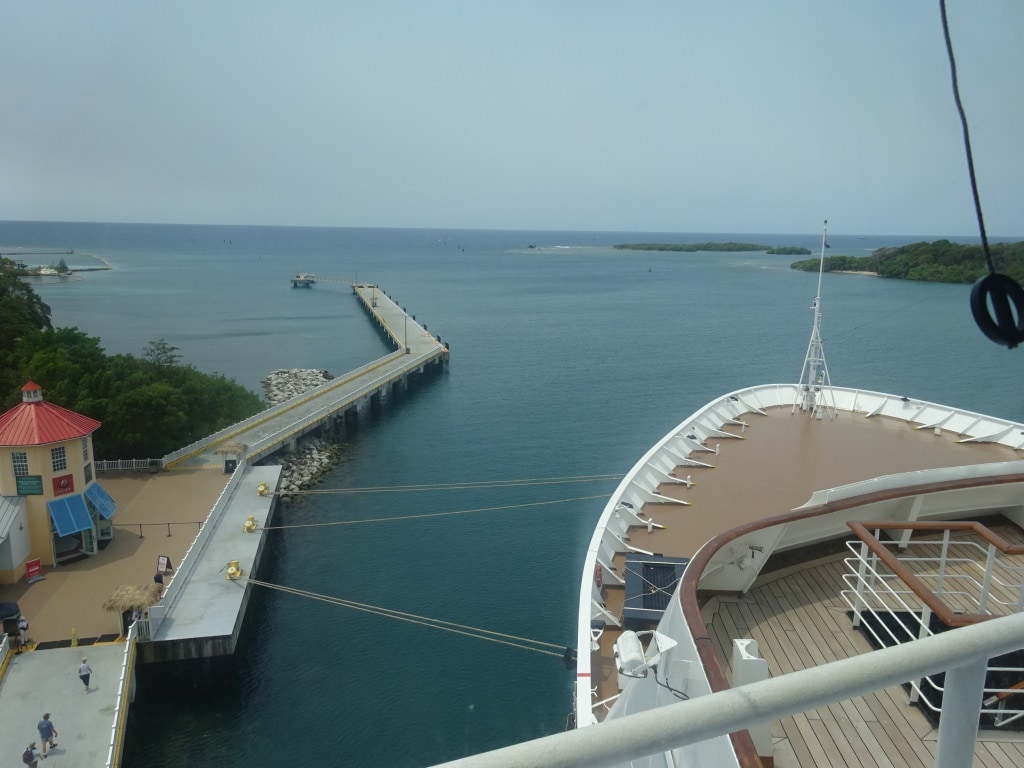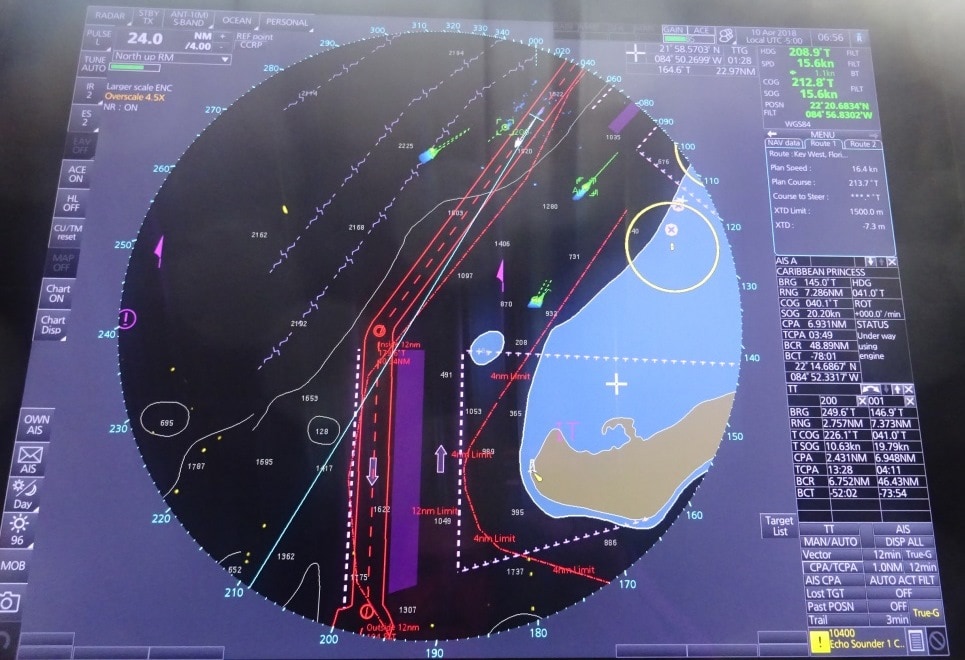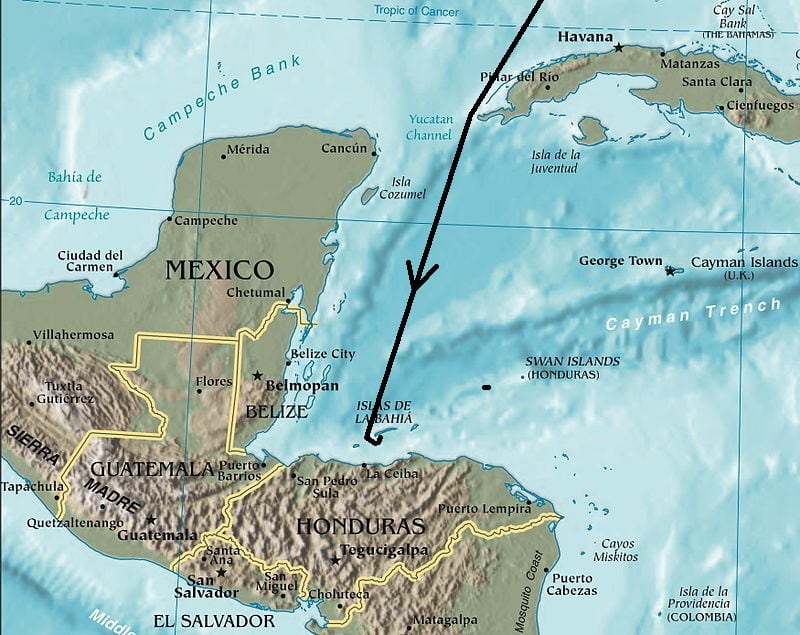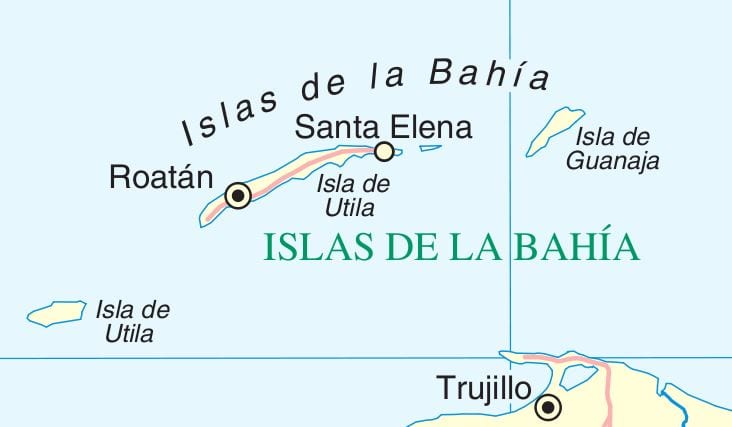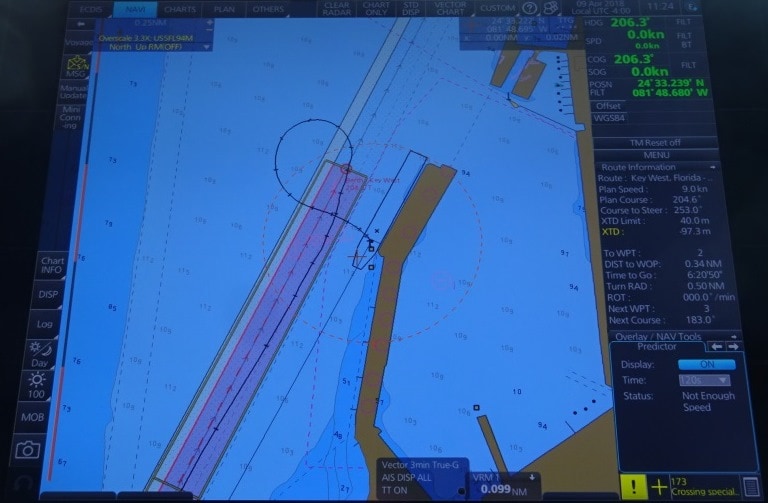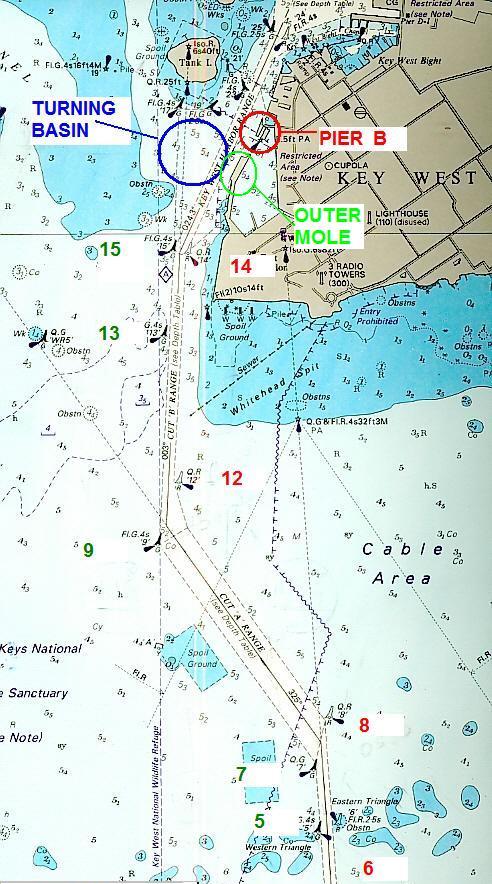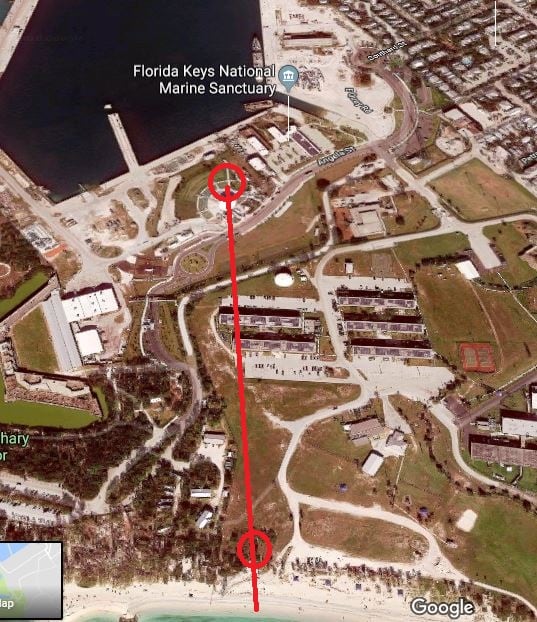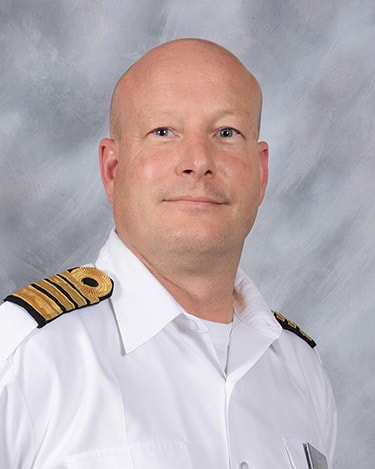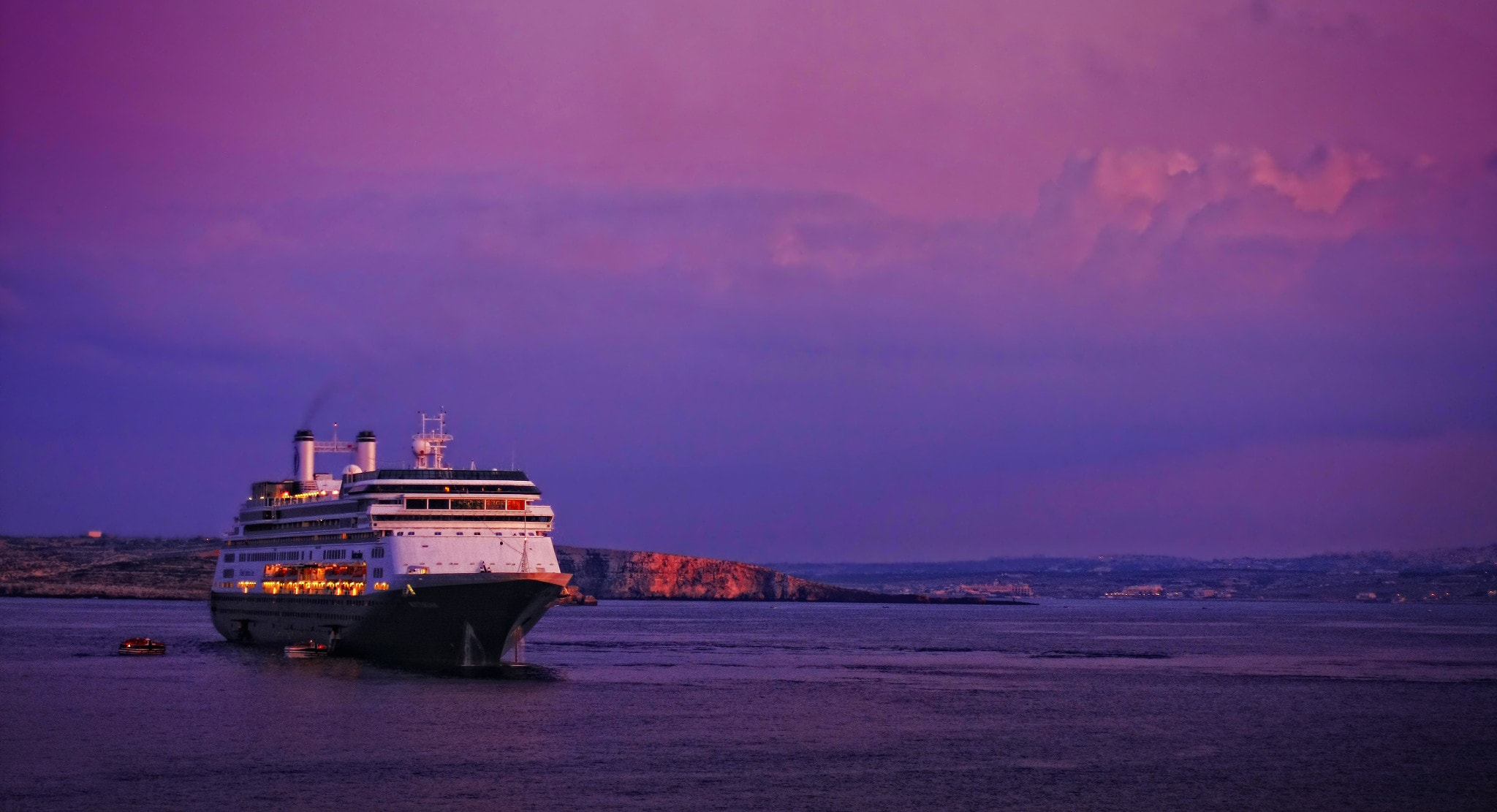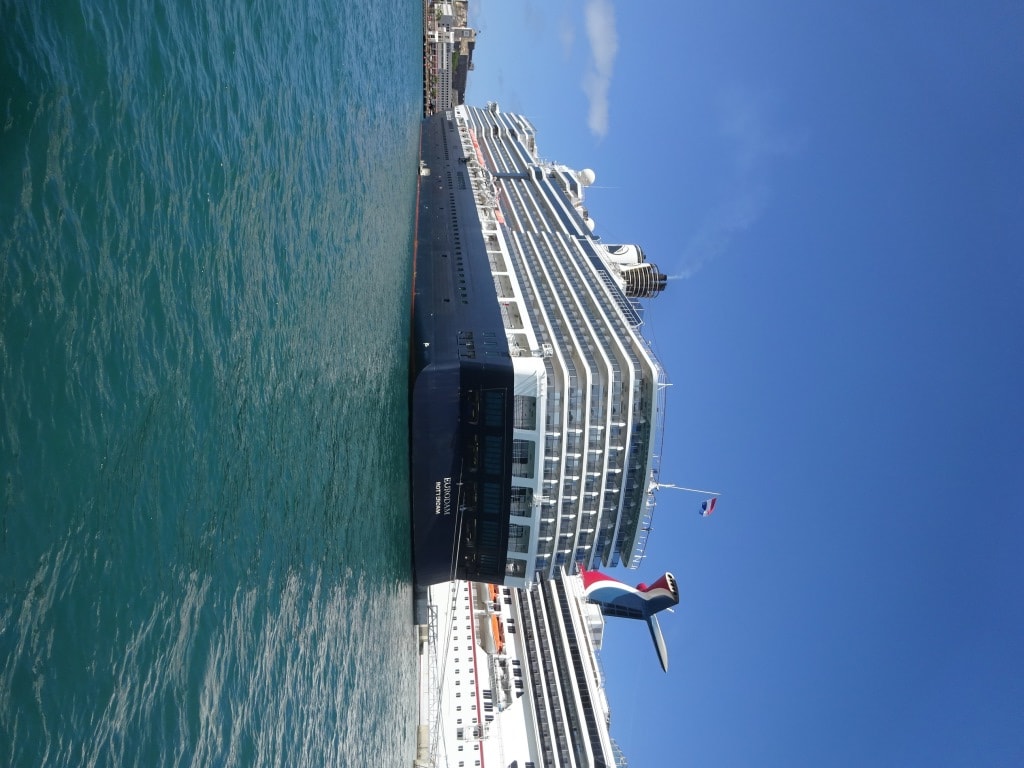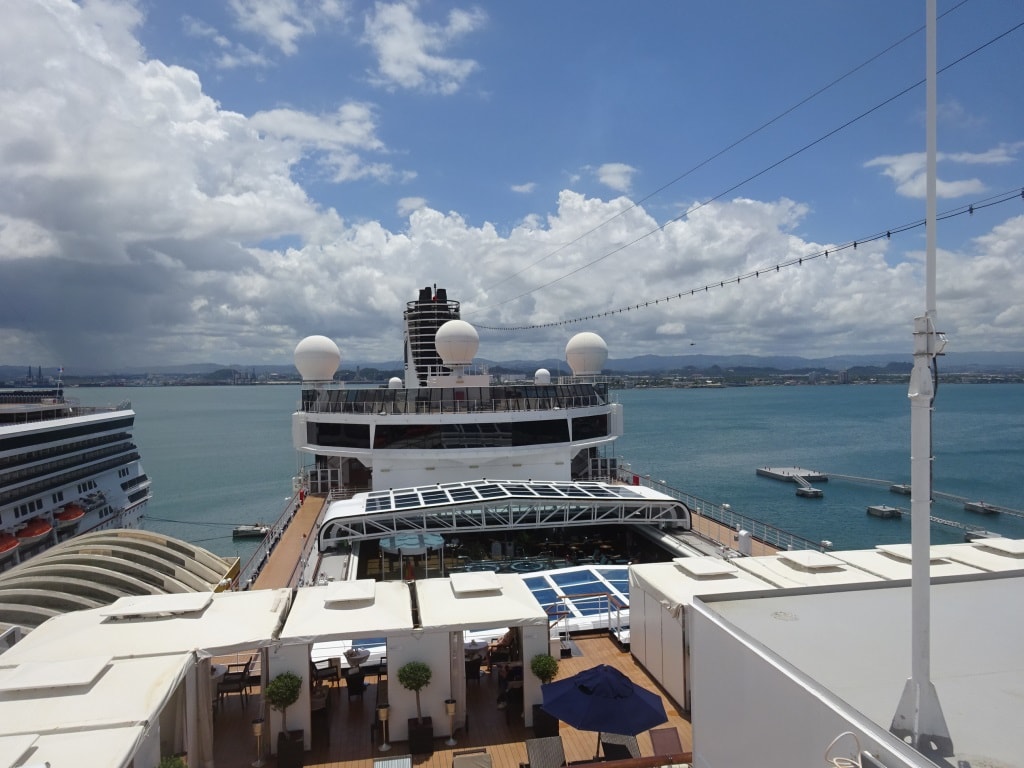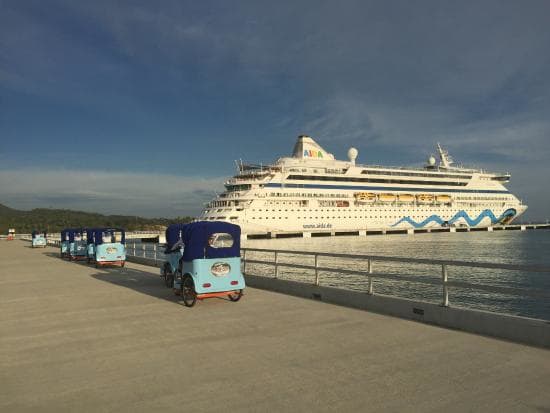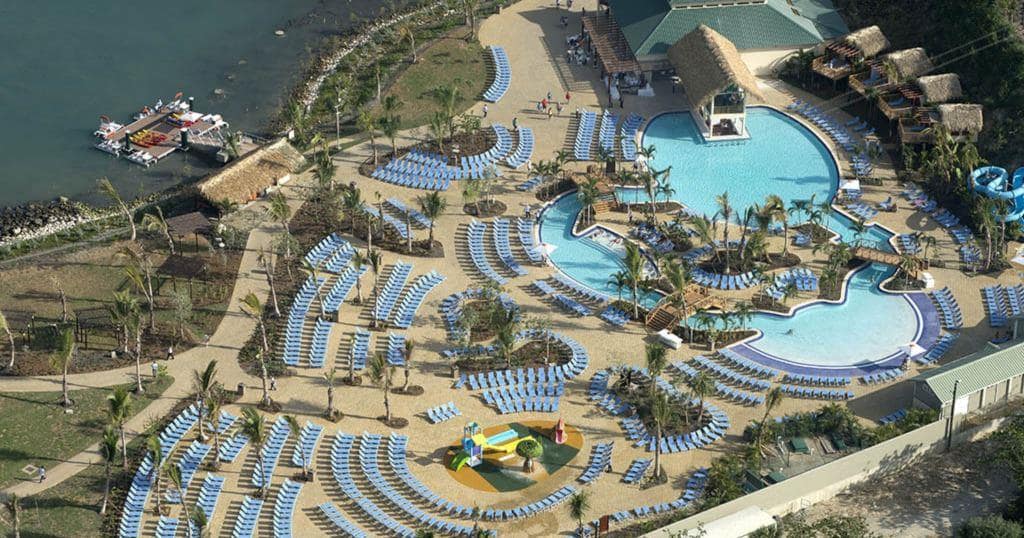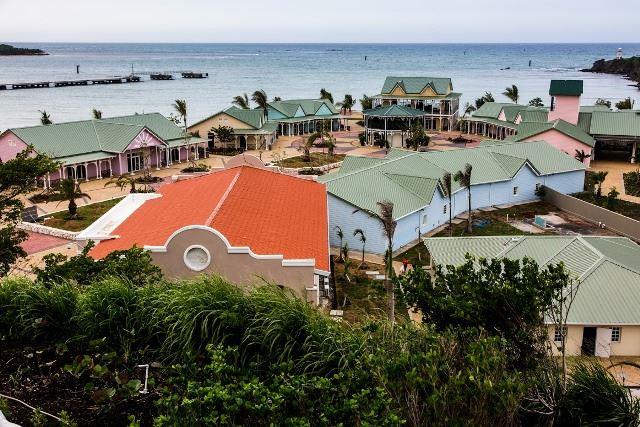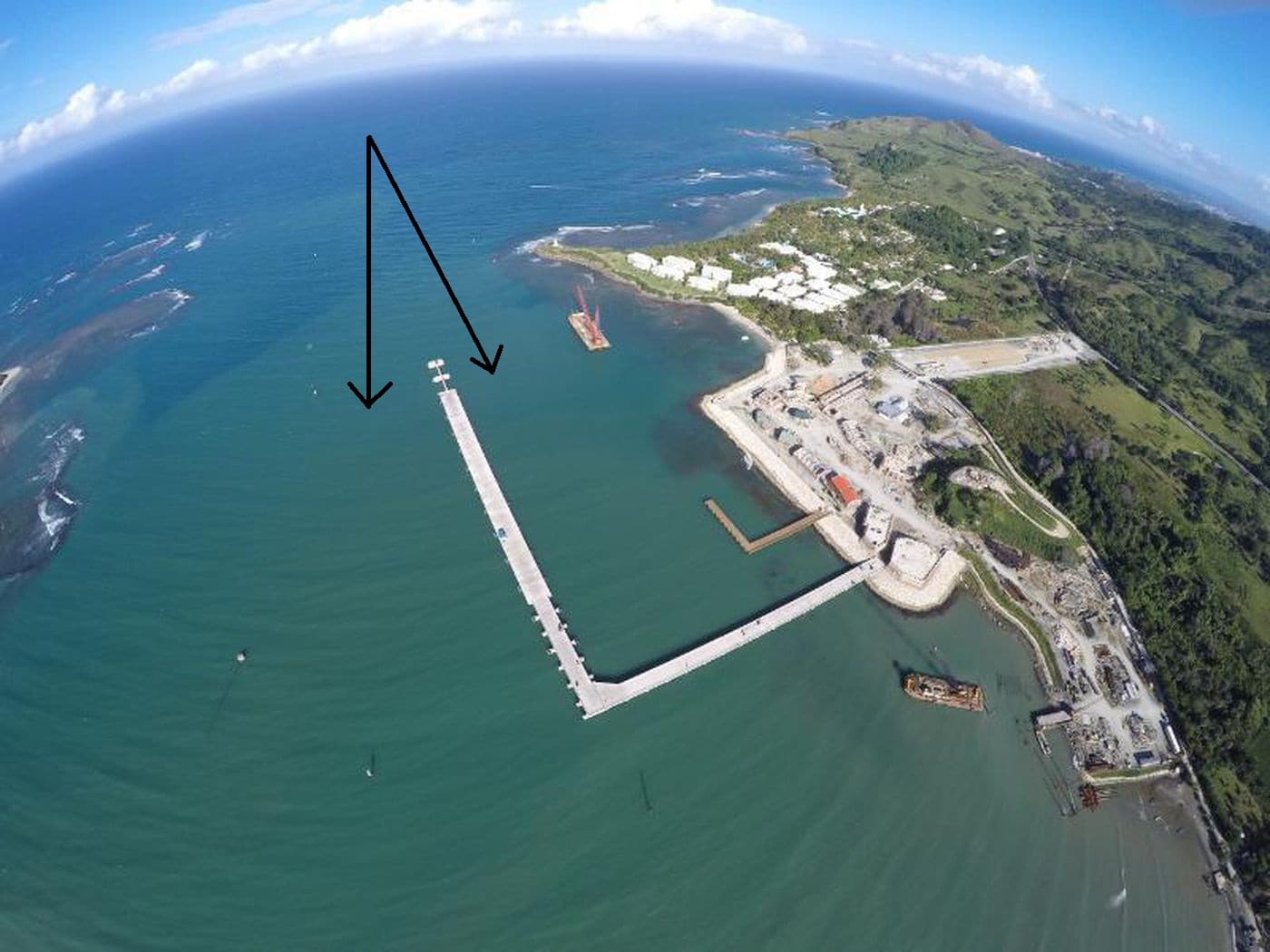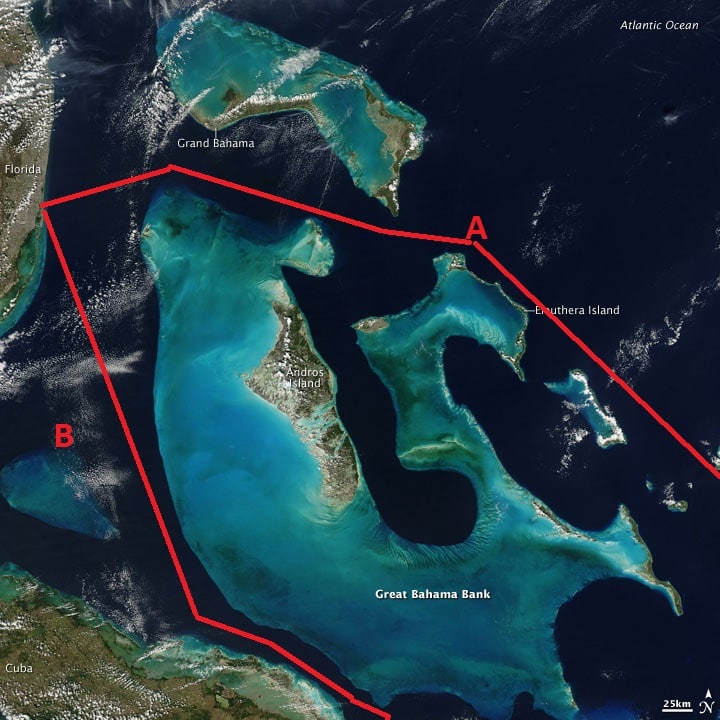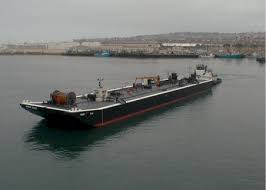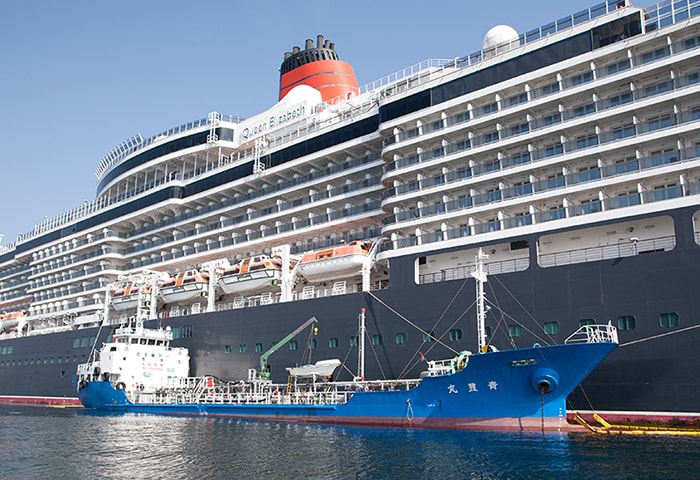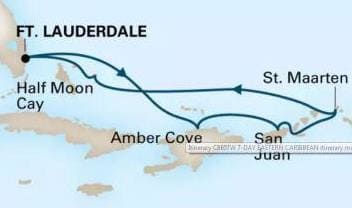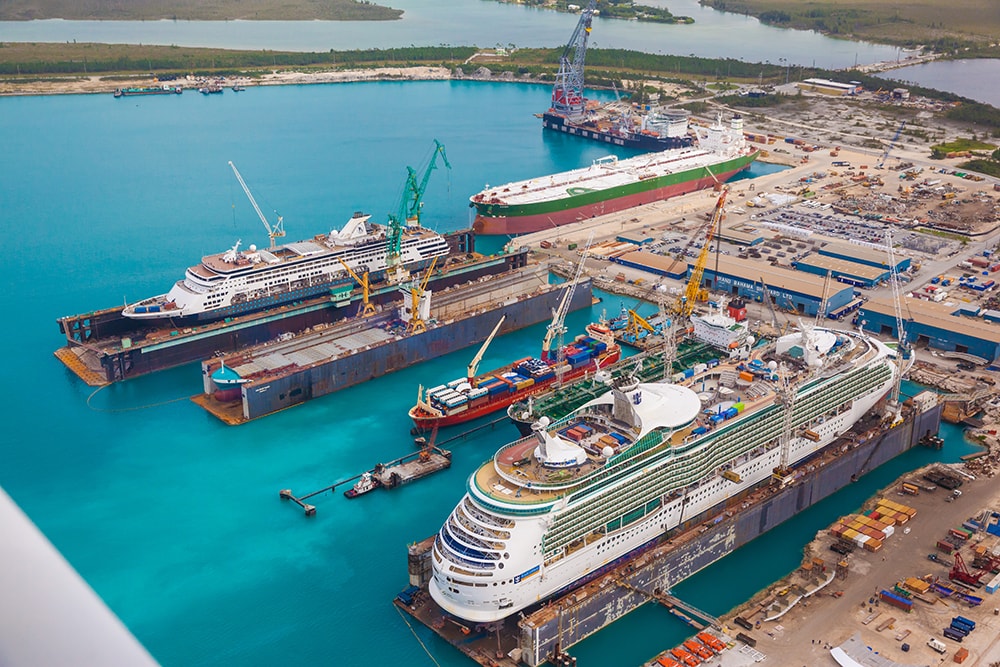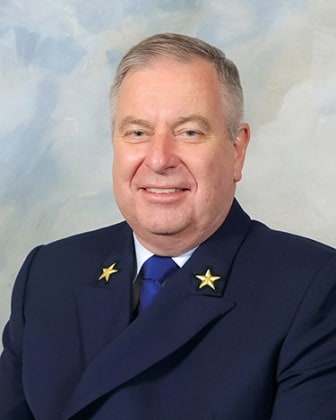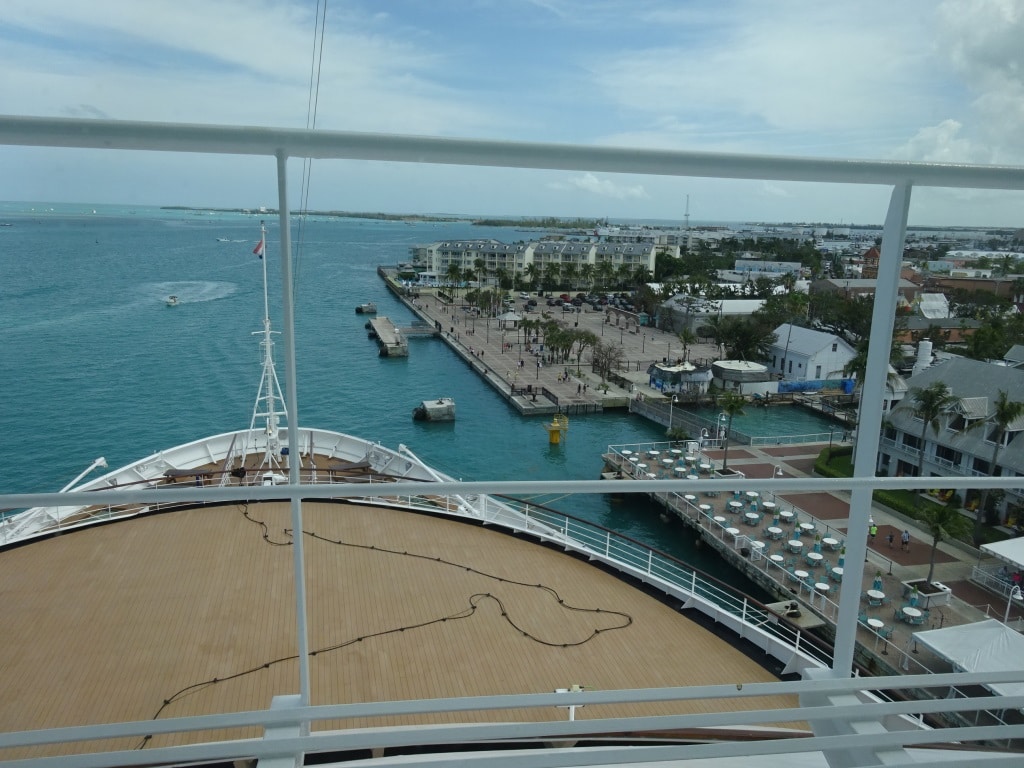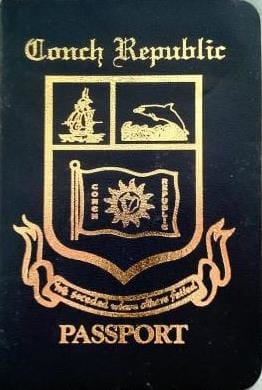The nice thing about this port is that it is very well sheltered from the open sea; the not so nice thing is that you have to travel a long distance through shallow water to get there. Santo Tomas is located in a sort of inlet or bay that is almost closed off at all sides by land. Most of it is the mainland but at the entrance side there is a peninsula and some islands. Because the inlet is very shallow a long and straight canal has been dug to the port. Once you come outside the buoys you are immediately aground. This morning when we came in, we saw a container ship that had just done that. It has been there for a while and might be there for a while longer until they have figured out how to pull it off the mud flats. I do not know what caused it to go aground but most of the time it is a steering gear failure. A cargo ship seldom has the option B that we have of keeping the ship under control with the thrusters. With a cargo ship it either works or you go aground and there is not much you can do about it.
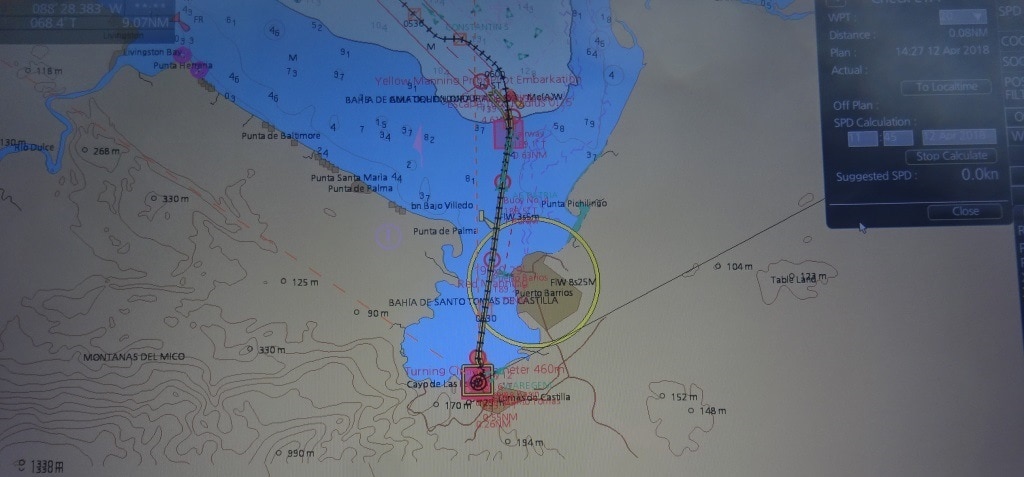
Our Approach. White color is water with depths from 10 to 20 meter. Blue color is less then 10 meters and we need 9 meters at the minimum. We have 8 meters draft and then we need about a meter more to be able to sail through the channel.
To be on time for 07.00 hrs. docking we had to be at the pilot station at 06.00 hrs. and then sail through the channel for 30 minutes and then swing to port to dock starboard side alongside. It does not make much difference here which side you go alongside. I personally prefer portside, so the noise is aimed at the shallows but some captains prefer the nose (& bridge) towards the rest of the port so you can see all the traffic coming and going and any mayhem that might ensue. If there is only one cruise ship then it is always docked in the west corner, to shorten the distance for the guests to the gate, the water taxis and the souvenir shops. When there are two cruise ships then one cargo ship has to go to anchor to make room. Today we did not have to make any cargo ship captain unhappy as we were the only one.
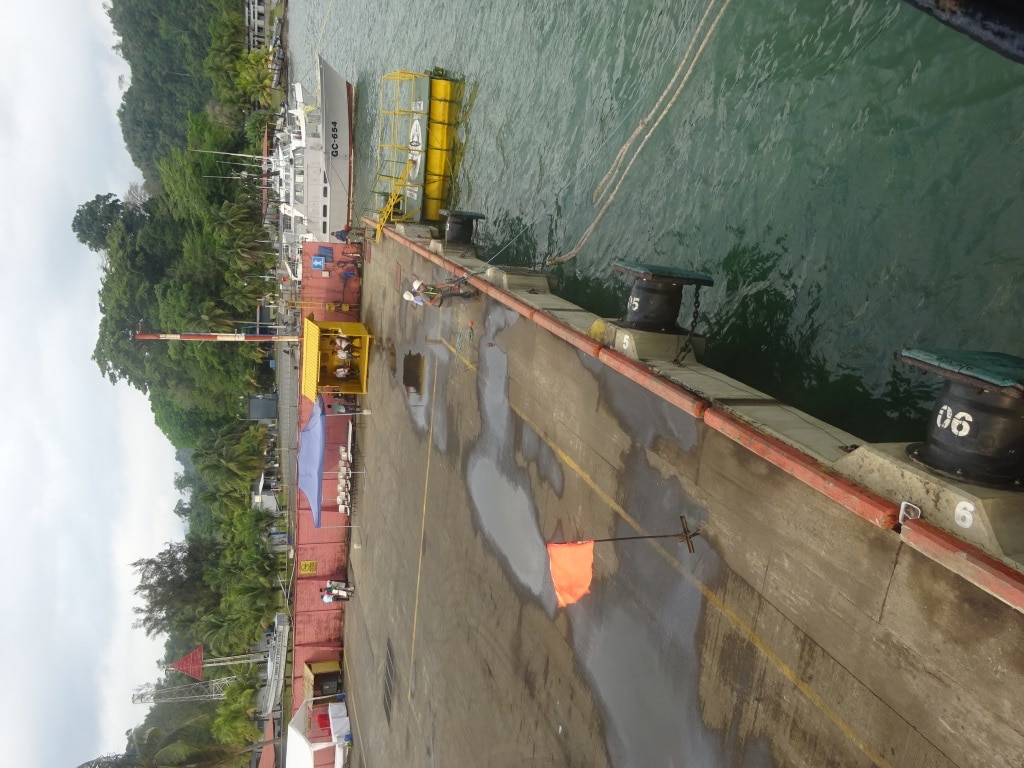
………..You will park exactly at the flag and nowhere else………, otherwise the harbormaster will be upset. This photo was taken this morning on arrival when I was observing / reviewing the docking routines of the sailors and officer at the aft mooring station.
Guatemala and Costa Rica had a large influx of German immigrants around 1900 and that is still very visible in the way the ports here operate. Everything is organized and everybody in the port sticks to the rules. While in other Middle and South American ports there is sometimes a certain amount of “creativity” present as far as adhering to times, safe working practices, planning and efficiency. Here everything is (pre) organized, everybody is on standby and it all rolls as we expect it to be when dealing with a cruise ship on a tight schedule. But at the same time the locals do not give the impression that they are really stressed by it. Maybe they should start a training school, I know quite a few port authorities who would benefit from it.
Something to report from yesterday. The Holland America ships try to do charity work in the various ports of call. For those of you who have been reading my blog for a longer period might recall that the ms Veendam was always quite active in this port and the ms Statendam in Corinto, Nicaragua. Well the ms Rotterdam was active yesterday in Mahogany Bay. When you build a new port, you alter the water flow in the natural bay that forms the basis of the new port. The water flow can then produce silting, sediment and more land but also coastal erosion. A very effective way to stop coastal erosion is the planting of Mangrove trees. The only challenge here is that you get wet. But that did not stop our crew yesterday and under the leadership of our environmental officer Juliana Coffey, there was a lot of splashing going on just around the corner of the ship. A new line of mangrove trees was planted and their roots will help to anchor the soil against the banks for Mahogany Bay and protect the land but also create a new habitat for several sorts of birds and water animals.
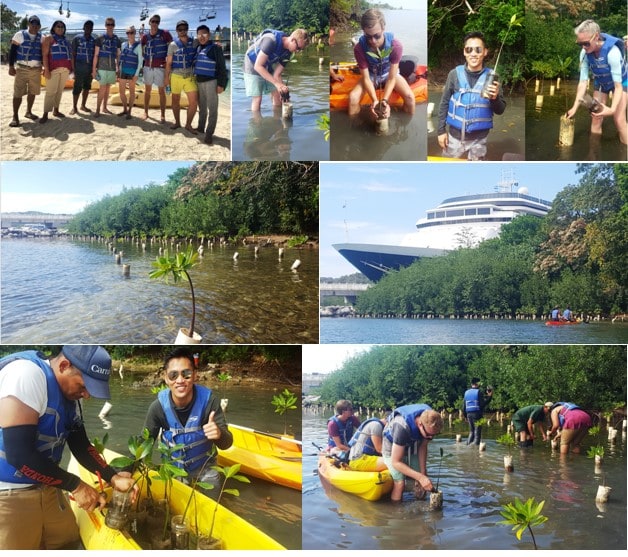
A compilation of photos taken during the Mangrove Planting yesterday in Mahogany Bay. (Photo courtesy: Ships environmental Officer Juliana Coffey = the lady top right with the fancy sunglasses)
Apart from that we also try to recycle as much as we can and in the past few weeks we have offloaded in various ports 550 extinguishers as the time came that they had to be replaced. All our extinguishers are kept in perfect condition but the law says that after 20 years you have to replace them. Basically we are replacing brand new extinguishers that have just been hanging there for 20 years, with new ones, which will (hopefully) also just hang there for a very long time to come. 550 extinguishers are expensive and for local schools, hospitals and other organizations, this is a great help.
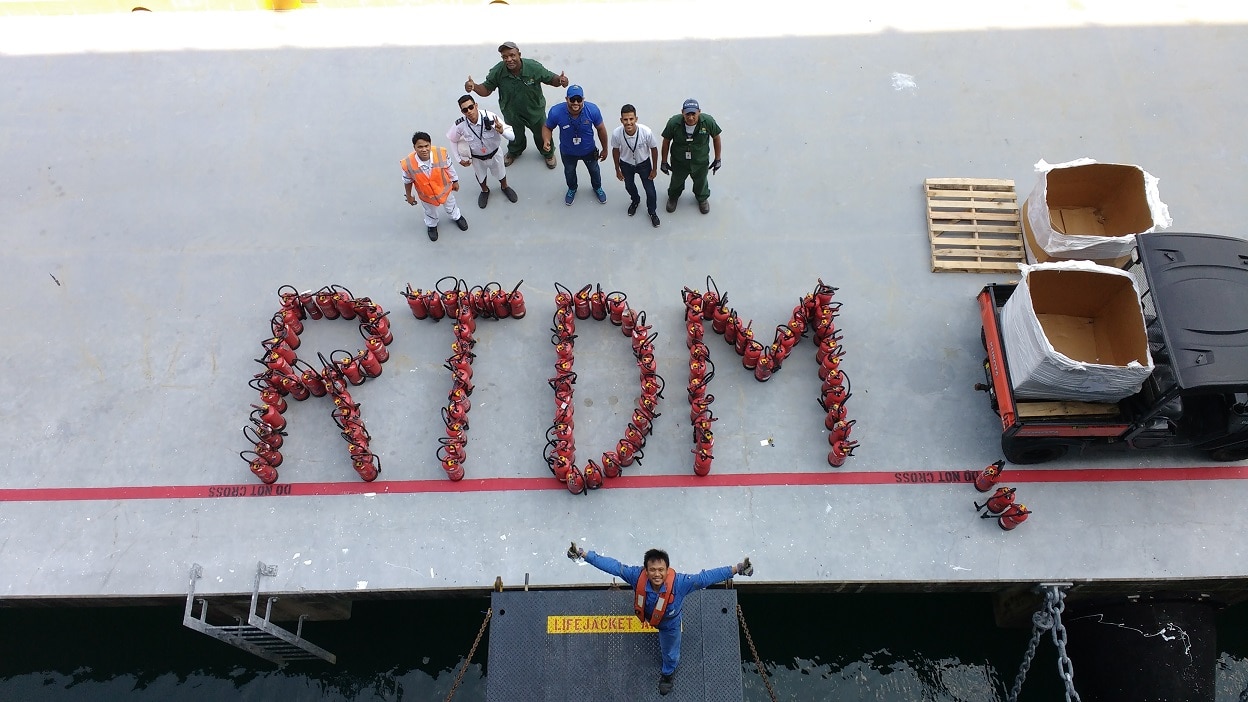
Another batch of Extinguishers going off in one of the ports. (Photo Courtesy: Rotterdam Environmental Officer Peter Tukker)
Tomorrow we will be in Costa Maya, Mexico. This is also a specially built cruise port and here the guests have either the option to go into the resort to enjoy a beach day, to the little fishing village of Mahahual, or go on an excursion to the various historical Mayan Sites in the area. According to the schedule we should be together with one of the “Apartment of the Seas” so we will see who will show up.
Weather: More of the same. Partly Cloudy going to full Sunshine later and very warm temperatures.
